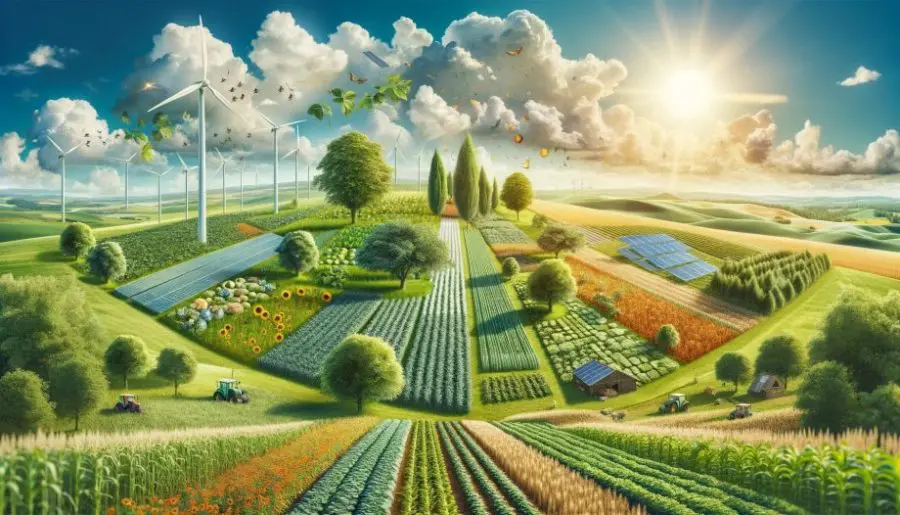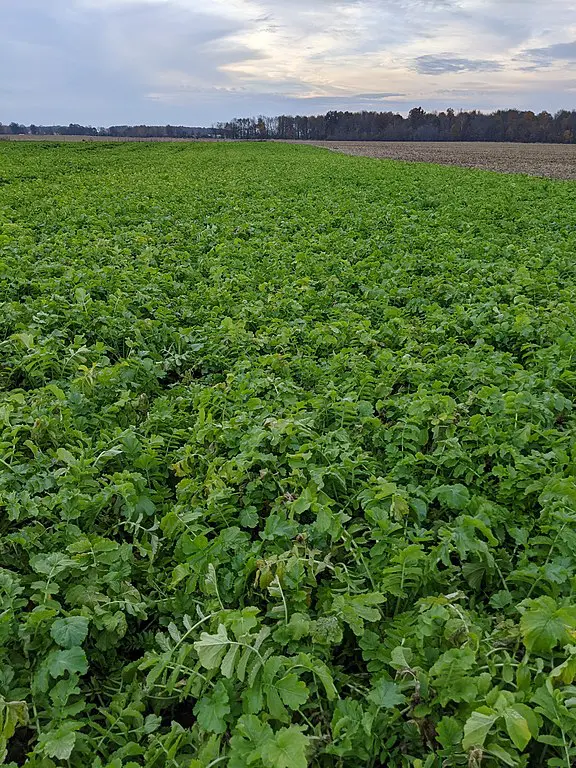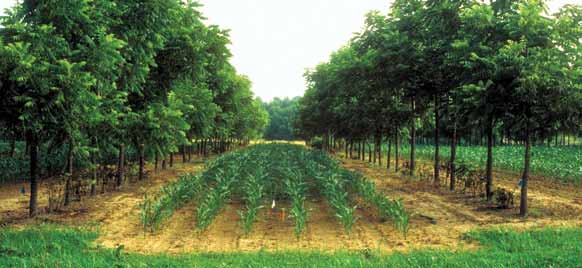
Discover how carbon insetting in agriculture is revolutionizing farming for a greener future! Dive into its benefits, practices, and impact in our friendly guide.
Carbon Insetting in Agriculture Key Takeaways:
- Carbon insetting in agriculture involves integrating sustainable practices directly within farming operations to reduce carbon emissions.
- This includes techniques like cover cropping, reduced tillage, and agroforestry, which enhance soil health and biodiversity, contributing significantly to environmental sustainability.
Welcome to the green world of carbon insetting in agriculture! It’s a game-changer for farmers and the planet alike.
This innovative approach is not just about growing crops; it’s about growing a sustainable future.
Join us as we delve into how carbon insetting is reshaping agriculture into an eco-friendly powerhouse!
Understanding Carbon Insetting in Agriculture
In the world of agriculture, carbon insetting is becoming a key strategy for sustainability.
It’s a process where farmers and agricultural businesses reduce their carbon footprint directly on their farms.
This is different from carbon offsetting, where emissions are compensated for by funding external environmental projects.
Insetting involves changing farming practices to absorb more carbon from the atmosphere.
This might include planting more trees, using better soil management techniques, or adopting renewable energy sources.
These practices not only help in battling climate change but also improve the health of the land.
What is Carbon Insetting?
Defining Carbon Insetting:
-
- Carbon insetting involves integrating carbon reduction strategies directly into the operations of a farm or agricultural business.
- This can include practices like agroforestry, where trees are grown alongside crops, or improved land management that enhances soil carbon storage.
Carbon Insetting vs. Offsetting:
-
- While offsetting involves compensating for emissions through projects outside of a company’s direct control, insetting is about making changes within the company’s own operations. It’s a more direct approach to reducing a business’s carbon footprint.
The Importance of Carbon Insetting in Agriculture
-
- Environmental Benefits: Carbon insetting plays a crucial role in reducing greenhouse gas emissions in the atmosphere. Improved agricultural practices can lead to healthier soil, which captures more carbon.
- This not only combats climate change but also enhances biodiversity and soil quality.
-
- Economic Advantages: For farmers, carbon insetting can lead to long-term economic benefits. Healthier soil means better crop yields and sustainable practices can open up new markets and financial incentives.
- For example, there are emerging markets for carbon credits generated through insetting practices.
In a Nutshell:
This introduction and the subtopics aim to provide clear and factual information on what carbon insetting is and why it’s important in the context of agriculture.
Understanding Carbon Insetting

Defining Carbon Insetting
Carbon insetting is a proactive approach in agriculture, where farmers and businesses integrate carbon reduction techniques directly into their farming operations.
Unlike traditional methods that solely focus on maximizing yield, carbon insetting encourages practices that actively reduce carbon emissions or increase carbon storage within the farm itself.
This can include a range of strategies such as:
- Agroforestry: Combining trees with crops or livestock to enhance carbon sequestration.
- Improved Soil Management: Techniques like no-till farming, cover cropping, and organic fertilization to increase the soil’s carbon content.
- Renewable Energy Use: Implementing solar, wind, or bioenergy solutions to power farm operations.
Carbon insetting differs significantly from carbon offsetting. While offsetting involves investing in external projects to compensate for emissions, insetting is about making changes within the farm’s own ecosystem to create a direct and measurable impact on carbon levels.
Historical Context
The concept of carbon insetting has evolved over time, aligning closely with the rise of sustainable agriculture practices.
Its roots can be traced back to the early discussions on climate change and the need for more environmentally friendly farming methods.
Initially, the focus was primarily on reducing harmful emissions, but over time, the narrative shifted towards creating positive impacts directly within the agricultural sector.
Key milestones in this evolution include:
- Early 2000s: Recognition of agriculture’s potential to mitigate climate change, leading to research on carbon sequestration in soils and vegetation.
- The mid-2000s to 2010s: Development of sustainable farming practices like conservation tillage and precision agriculture, which laid the groundwork for carbon insetting.
- Recent Years: Increasing awareness and adoption of carbon insetting, driven by technological advancements, policy support, and market incentives for sustainable practices.
The growth of carbon insetting reflects a broader shift in agricultural practices, from merely reducing harm to actively contributing to environmental healing.
This transition is crucial for the long-term sustainability of the agriculture sector and the health of our planet.
The Role of Carbon Insetting in Agricultural Sustainability

In the journey towards sustainable farming, carbon insetting stands out as a powerful tool.
It’s not just about reducing the bad stuff. It’s about actively doing good right where it counts.
This section delves into the sustainable practices that form the core of carbon insetting, such as cover cropping, reduced tillage, and agroforestry.
Each of these methods not only supports the environment but also offers tangible benefits to farmers.
By embracing these practices, agriculture can become a leading force in the fight against climate change, proving that taking care of our planet can go hand-in-hand with successful farming.
Sustainable Practices

- Cover Cropping: Planting crops like clover or rye when fields would otherwise be bare. These plants protect the soil from erosion, boost its nutrient content, and even help control pests.
- Reduced Tillage: Cutting back on tilling helps maintain the soil structure, reduces erosion, and keeps more carbon stored in the soil.
- Agroforestry: Integrating trees and shrubs into agricultural landscapes. This practice not only enhances carbon sequestration but also diversifies farm income and improves wildlife habitats.
Benefits of Carbon Insetting Practices
- Enhancing Soil Health: These practices lead to healthier, more fertile soil, which means better crop yields over the long term.
- Improving Water Retention: Healthier soils hold water more effectively, reducing the need for irrigation and making farms more resilient against drought.
- Boosting Biodiversity: Diverse farming practices encourage a wider range of plant and animal life, which can lead to healthier ecosystems and even natural pest control.
Economic and Environmental Alignment
- Profitability Through Sustainability: By adopting carbon insetting practices, farmers can reduce costs (like those for fertilizers and irrigation) and potentially access new revenue streams (such as carbon credits).
- Long-Term Benefits: While there might be upfront costs or learning curves, the long-term gains in soil health and crop resilience can lead to greater overall profitability.
- Meeting Market Demand: There’s a growing consumer demand for sustainably produced goods. Farms that adopt carbon insetting practices may gain access to new markets and premium pricing options.
Key Techniques in Carbon Insetting
Carbon insetting is a practical approach in agriculture, involving specific techniques that have a real impact on the farm’s carbon footprint.
This section will explore the essential on-farm practices of carbon insetting like afforestation and agroforestry.
We’ll also delve into how carbon is stored in soils and plants, a process crucial to understanding carbon sequestration.
To illustrate the effectiveness of these techniques, we’ll look at real-world examples of successful carbon insetting in agriculture.
On-Farm Practices
- Afforestation: This involves planting new forests on previously non-forested land. It’s a key method for increasing carbon sequestration, creating new ecosystems, and enhancing biodiversity.

- Agroforestry: A practice where trees are integrated with crops or livestock farming. It provides a dual benefit: trees capture CO2, while the crops or livestock thrive in improved conditions due to the presence of trees.
Agroforestry (or agro-sylviculture) is a land use management system in which combinations of trees or shrubs are grown around or among crops or pastureland.[1] Agroforestry combines agricultural and forestry technologies to create more diverse, productive, profitable, healthy, and sustainable land-use systems. Wikipedia
Carbon Sequestration Processes
- Soil Carbon Storage: Practices like reduced tillage and cover cropping can increase organic carbon storage in the soil. Organic matter in the soil, including decomposed plant and animal material, acts as a significant carbon sink.
- Plant-Based Carbon Capture: Through photosynthesis, plants absorb CO2 and convert it into organic matter, stored in plant tissue and later transferred to the soil when the plant decomposes.
Case Studies: Success Stories in Carbon Insetting
- General Mills and Regrow Partnership: General Mills teamed up with Regrow to track the adoption of regenerative practices across 175M acres.
- This partnership aims to enhance scope 3 GHG emissions reporting and monitor the environmental impacts of agricultural practices in the company’s sourcing regions (Source: Regrow Case Studies).
- Kellanova and Regrow Collaboration: Kellanova partnered with Regrow to encourage rice farmers in the Lower Mississippi River Basin to adopt climate-friendly practices.
- These practices are focused on building soil health and reducing greenhouse gases emitted from rice production (Source: Regrow Case Studies).
In a Nutshell:
These case studies highlight the practical application of carbon insetting techniques and their tangible benefits in real-world agricultural settings.
Measurement and Monitoring
In the world of carbon insetting, it’s not enough to just implement sustainable practices; you also need to measure and monitor their impact.
This section explores the cutting-edge technologies used in agriculture to track carbon sequestration.
From the skies with remote sensing and satellite imaging to the ground with advanced sensors, these technologies provide crucial data.
We’ll also delve into how data analytics plays a pivotal role in quantifying and understanding the effectiveness of carbon sequestration efforts in agriculture, turning raw data into actionable insights.
Technologies Used
- Remote Sensing and Satellite Imaging: These tools provide a bird’s-eye view of agricultural land, helping to monitor changes in vegetation, land use, and soil conditions over large areas. By tracking these changes, farmers and scientists can estimate the amount of carbon being captured or released.
- Ground-Based Sensors: Sensors placed in fields measure various environmental parameters like soil moisture, temperature, and nutrient levels. This data helps in understanding how different farming practices affect the soil’s ability to store carbon.
Data Analytics
- Quantifying Carbon Sequestration: Sophisticated data analytics are used to process information gathered by remote sensing and ground sensors. This data is then used to calculate the amount of carbon being sequestered or released by different farming practices.
- Improving Farm Management: By analyzing this data, farmers can make informed decisions about which practices are most effective for carbon sequestration and overall farm health. This can lead to more targeted and efficient farming strategies.
In a Nutshell:
The measurement and monitoring technologies in carbon insetting not only provide a way to verify the effectiveness of sustainable practices but also open up new avenues for improving agricultural methodologies and environmental stewardship.
Challenges and Solutions
Implementing carbon insetting in agriculture comes with its set of challenges.
From ensuring accurate measurements to dealing with the costs and knowledge gaps, there are several hurdles that farmers and stakeholders must overcome.
This section will highlight these major challenges and discuss practical solutions to address them.
By exploring education initiatives, financial incentives, and policy frameworks, we can understand how these barriers can be turned into stepping stones toward a more sustainable agricultural future.
Identifying Major Challenges
- Accuracy in Measurements: Ensuring that carbon sequestration is accurately measured can be complex, given the variability in environmental conditions and farming practices.
- Cost: Implementing new sustainable practices often requires initial investments, which can be a significant barrier, especially for small-scale farmers.
- Knowledge Gaps: Many farmers might not have access to the latest information or the technical know-how to implement carbon insetting practices effectively.
- Scalability: Scaling up carbon insetting practices to larger areas and across different agricultural systems presents logistical and practical challenges.
Presenting Solutions
- Education: Providing farmers and agricultural workers with education and training on sustainable practices and carbon insetting can bridge knowledge gaps. Workshops, online courses, and extension services can be effective tools.
- Financial Incentives: Offering financial incentives such as subsidies, grants, or carbon credits can help offset the costs of implementing sustainable practices. This could encourage more farmers to adopt carbon-insetting methods.
- Policy Frameworks: Developing supportive policy frameworks that promote sustainable agriculture practices is crucial. These policies can include regulations that encourage carbon insetting, support for research and development, and the creation of markets for carbon credits.
In a Nutshell:
Addressing these challenges with targeted solutions is essential for the widespread adoption and success of carbon insetting in agriculture, paving the way for a more sustainable and environmentally friendly farming sector.
Technological Advancements in Carbon Insetting
The adoption of carbon insetting practices in agriculture is being revolutionized by technological advancements.
Digital tools, Geographic Information Systems (GIS), Internet of Things (IoT) sensors, and blockchain technology are playing pivotal roles in enhancing the efficiency and effectiveness of these practices.
In this section, we’ll explore how these technologies contribute to more precise, efficient, and transparent carbon insetting processes, marking a significant leap forward in sustainable agriculture.
The Role of Digital Tools
- Data Management and Analysis: Digital platforms are essential for collecting, managing, and analyzing data related to carbon insetting practices. They offer farmers insights into the effectiveness of their practices and help in decision-making.
- Remote Farm Management: With the help of digital tools, farmers can monitor and manage their farms remotely, optimizing resources and reducing their carbon footprint.
Geographic Information Systems (GIS)
- Land Use Monitoring: GIS technology allows for precise mapping and analysis of land use, which is crucial for planning and implementing carbon insetting strategies.
- Environmental Impact Assessment: GIS helps in assessing the environmental impacts of farming practices, including changes in land cover and biodiversity, which are vital for carbon sequestration.
Internet of Things (IoT) Sensors
- Real-Time Monitoring: IoT sensors placed in agricultural fields provide real-time data on soil health, moisture levels, and other environmental factors. This data is key to managing farming practices that promote carbon sequestration.
- Precision Agriculture: IoT technology enables precision agriculture, where resources like water and fertilizers are used more efficiently, reducing waste and emissions.
Blockchain Technology
- Traceability and Transparency: Blockchain can be used to create a transparent and tamper-proof record of carbon sequestration efforts and their outcomes.
- Carbon Credit Trading: It also facilitates the trading of carbon credits, ensuring that credits are accurately accounted for and reducing the risk of double counting.
In a Nutshell:
These technological advancements are making carbon insetting more accessible, reliable, and effective, driving forward the agenda of sustainable agriculture in the 21st century.
Local Impact and Value Chain Integration
Carbon insetting in agriculture does more than just help the environment; it brings about significant local impacts and strengthens communities.
By implementing carbon insetting practices, farmers and businesses can contribute to the resilience of local ecosystems and economies.
This section will discuss how these practices create positive localized impacts and explore their role in building resilient agricultural supply chains, thereby benefiting not just the environment but also the people and communities involved in agriculture.
Creating Localized Impacts
- Enhancing Community Well-being: Carbon insetting practices often lead to healthier local environments, which can improve the quality of life for community members. For example, afforestation and agroforestry can create green spaces and improve air quality.
- Job Creation and Economic Growth: Implementing these practices can create new job opportunities in rural areas, from fieldwork to data analysis for monitoring carbon sequestration.
Strengthening Communities Through Carbon Insetting
- Empowering Local Farmers: By providing farmers with the tools and knowledge to implement carbon insetting, these practices can help them become more self-sufficient and resilient.
- Building Stronger Local Economies: Sustainable agricultural practices can attract investments and open up new markets, contributing to the economic vitality of rural areas.
Role in Resilient Agricultural Supply Chains
- Supply Chain Stability: Sustainable practices lead to healthier crops and soils, which can make agricultural supply chains more resilient to climate change and other environmental challenges.
- Creating Traceable and Transparent Supply Chains: Implementing carbon insetting practices can increase the traceability of agricultural products, appealing to consumers who value sustainability.
In a Nutshell:
In summary, carbon insetting practices not only benefit the environment but also play a crucial role in strengthening local communities and building resilient agricultural supply chains.
These practices bring about a holistic approach to sustainability, where environmental, economic, and social factors are interlinked and mutually reinforcing.
Practical Implementation in Agriculture
Adopting carbon insetting practices in agriculture involves practical steps that farmers can take to promote sustainability on their lands.
This section provides a guide on implementing regenerative agricultural management practices, which are key to carbon insetting.
We’ll also discuss the significant roles that renewable energy and reforestation play in this process.
Understanding and applying these practices can transform farms into models of environmental stewardship and sustainability.
Implementing Regenerative Agricultural Management Practices
Understanding Regenerative Practices:
Regenerative agriculture involves practices that restore and enhance the natural resources they use, rather than depleting them. It includes soil conservation, water management, and biodiversity enhancement.
Key Practices:
-
- No-Till Farming: Reducing or eliminating tillage to maintain soil structure and organic matter.
- Cover Cropping: Planting crops that cover the soil and manage soil erosion, improve soil health, and enhance water availability.
- Crop Rotation and Diversity: Growing a variety of crops in succession to improve soil health and reduce pest and disease problems.
Getting Started:
Farmers can start small, perhaps by introducing cover crops or reducing tillage in part of their land, and gradually expand as they become more comfortable with the practices.
Role of Renewable Energy in Carbon Insetting
- Reducing Fossil Fuel Use: Incorporating renewable energy sources like solar, wind, or bioenergy can significantly reduce a farm’s carbon footprint.
- Examples of Implementation: Solar panels can power farm operations, while wind turbines can provide energy for remote agricultural areas.
Reforestation as a Carbon Insetting Strategy
- Benefits of Reforestation: Planting trees on agricultural land not only captures carbon but also provides benefits like habitat for wildlife, improved water cycles, and potential timber or fruit production.
- Integrating Reforestation with Farming: Strategies like agroforestry, where trees are planted alongside or among crops and livestock, can enhance biodiversity and soil quality.
Table 1: Carbon Insetting Practices in Agriculture
| Practice | Description | Benefits |
|---|---|---|
| Cover Cropping | Planting crops that cover the soil to improve soil health and manage erosion. | Enhances soil fertility, reduces erosion, and aids in moisture retention. |
| Reduced Tillage | Minimizing soil disturbance to maintain its structure and organic content. | Preserves soil health, reduces carbon release, and improves water retention. |
| Agroforestry | Integrating trees with crop and livestock farming. | Increases biodiversity, enhances carbon capture, and diversifies income sources. |
| Renewable Energy | Implementing solar, wind, or bioenergy solutions. | Reduces reliance on fossil fuels and lowers the farm’s carbon footprint. |
In a Nutshell:
By implementing these practices, farmers can play a critical role in mitigating climate change, preserving natural resources, and ensuring the long-term sustainability of their land.
Monitoring and Advisory Tools
Effective implementation of carbon insetting requires not only the right practices but also the right tools to monitor and guide these efforts.
This section introduces essential tools like Agrecalc’s Carbon Calculator and AgriWebb’s livestock management software, which are instrumental in measuring and managing the impact of sustainable agriculture practices.
Additionally, we’ll offer practical advice for farmers looking to start their journey in carbon insetting and how to monitor their progress effectively.
Tools for Carbon Insetting in Agriculture
- Agrecalc’s Carbon Calculator: This tool helps farmers and agricultural businesses calculate and understand their carbon footprint, offering insights into how different practices impact their greenhouse gas emissions. It’s designed to guide users in making more informed decisions about sustainable practices.
- AgriWebb’s Livestock Management Software: For livestock farmers, this software is a boon. It assists in managing herds and tracks various factors that contribute to a farm’s carbon footprint, such as feed efficiency and animal health, making the process of managing a sustainable livestock farm more streamlined and efficient.
Getting Started with Carbon Insetting
- Assessing Your Current Practices: Begin by evaluating current farming practices to identify areas where changes can be made to reduce carbon emissions or enhance carbon sequestration.
- Setting Realistic Goals: Start with achievable targets. For instance, if considering reforestation, begin with a small area before expanding.
- Seeking Expert Advice: Consult with agricultural extension services or sustainability experts who can provide tailored advice and guidance.
Monitoring Progress
- Regular Use of Monitoring Tools: Utilize tools like carbon calculators and management software regularly to track changes and improvements in your farm’s carbon footprint.
- Record-Keeping and Analysis: Maintain detailed records of changes made and their impacts. This will help in understanding what’s working and where adjustments are needed.
- Staying Informed: Keep up-to-date with the latest research and technologies in sustainable farming to continuously improve your practices.
Table 2: Technologies for Monitoring Carbon Insetting
| Technology | Purpose | Impact |
|---|---|---|
| Remote Sensing | Monitors changes in land use and vegetation from a distance. | Assists in estimating carbon sequestration and land management impacts. |
| Satellite Imaging | Provides a broad view of agricultural areas for environmental monitoring. | Useful for tracking large-scale changes in vegetation and soil conditions. |
| Ground Sensors | Measures soil moisture, temperature, and nutrient levels. | Helps in understanding soil’s carbon storage capabilities and farm conditions. |
| Data Analytics | Processes data from various sources to calculate carbon sequestration. | Enables farmers to make informed decisions about sustainable practices. |
In a Nutshell:
By leveraging these tools and following this guidance, farmers can effectively embark on their carbon-insetting journey, contributing to a more sustainable agricultural future.
Navigating Carbon Insetting in Agriculture FAQs
Starting on a journey of carbon insetting in agriculture can raise many questions.
This FAQ section aims to address some of the most common queries that farmers, landowners, and agricultural businesses might have about carbon insetting.
By providing clear, concise answers, we hope to demystify this sustainable practice and help you make informed decisions for your agricultural practices.
Q: What exactly is carbon insetting in agriculture?
A: Carbon insetting in agriculture refers to implementing practices directly within farming operations that reduce carbon emissions or enhance carbon sequestration.
This can include techniques like cover cropping, reduced tillage, agroforestry, and using renewable energy sources.
Q: How does carbon insetting differ from carbon offsetting?
A: Carbon offsetting involves compensating for emissions by investing in environmental projects outside of the farm, like reforestation projects elsewhere.
Carbon insetting, however, involves making changes within the farm itself to reduce or capture carbon emissions.
Q: What are some common carbon insetting practices?
A: Common practices include no-till farming, cover cropping, crop rotation, agroforestry, and integrating renewable energy sources like solar panels into farm operations.
Q: Is carbon insetting expensive to implement?
A: The cost can vary depending on the practice. Some, like crop rotation, might be relatively low-cost.
Others, like installing solar panels, might require more significant investment but can offer long-term financial benefits.
Q: How can I measure the impact of carbon insetting on my farm?
A: You can use tools like Agrecalc’s Carbon Calculator or AgriWebb’s livestock management software to measure your farm’s carbon footprint and track the impact of different practices.
Q: Can small-scale farms effectively implement carbon insetting?
A: Yes, small-scale farms can implement carbon insetting. Many practices are scalable and can be adapted to smaller operations.
Starting small and gradually expanding is a practical approach.
Q: Are there financial incentives for adopting carbon insetting practices?
A: Yes, there are various financial incentives available, such as subsidies, grants, and the potential to earn carbon credits, which can offset the costs of implementing these practices.
Q: How does carbon insetting contribute to the sustainability of agriculture?
A: Carbon insetting contributes to sustainability by reducing greenhouse gas emissions, improving soil health, promoting biodiversity, and enhancing the resilience of farming systems to climate change.
Q: Can carbon insetting help in improving biodiversity?
A: Yes, practices like agroforestry and cover cropping can improve biodiversity by creating habitats for various wildlife and improving soil microbial diversity.
Q: Where can I get more information or assistance in starting carbon insetting on my farm?
A: Agricultural extension services, sustainability consultants, and organizations specializing in sustainable agriculture can provide information and assistance.
Participating in workshops, webinars, and online courses on sustainable farming practices is also beneficial.
This FAQ section is designed to help you gain a clearer understanding of carbon insetting and its role in sustainable agriculture.
For more specific guidance tailored to your farm, consulting with sustainability experts and agricultural advisors is recommended.
Conclusion: Embracing Carbon Insetting for a Sustainable Agricultural Future
As we’ve explored throughout this discussion, carbon insetting stands as a pivotal element in the transition toward sustainable agriculture.
It represents a comprehensive approach, integrating environmental stewardship directly into farming practices.
The significance of carbon insetting lies in its dual benefit – it not only contributes to mitigating climate change by reducing greenhouse gas emissions and enhancing carbon sequestration but also bolsters the economic sustainability of farming operations.
The Role of Farmers in Climate Change Mitigation
By adopting practices like cover cropping, reduced tillage, agroforestry, and incorporating renewable energy, farmers play a crucial role in the fight against climate change.
These nature-based solutions to climate change improve soil health, increase biodiversity, and can lead to better crop yields and resilience against environmental stresses.
Moreover, the implementation of these practices can open doors to new markets and financial incentives, aligning with the growing global demand for sustainable products.
A Collective Journey Towards Sustainability
The journey to a sustainable agricultural system is a collective one, involving farmers, communities, policymakers, and consumers.
Carbon insetting is not just a farming strategy; it’s a commitment to a healthier planet and a more resilient food system.
We encourage farmers and agricultural stakeholders to consider carbon insetting as a viable solution for enhancing the environmental and economic sustainability of their operations.
It’s an investment in the future of farming and, more broadly, in the future of our planet.
The Future of Farming and Environmental Stewardship
For those in the agricultural sector, now is the time to explore how carbon insetting can be integrated into your practices.
For consumers, supporting products and businesses that adopt these sustainable practices is a powerful way to contribute to a more sustainable world.
Together, we can work towards a future where agriculture is part of the solution to environmental challenges, ensuring a thriving planet for generations to come.
References and Further Reading
To further explore the concept of carbon insetting and its application in agriculture, the following resources provide valuable information:
- Agrecalc’s Article on Carbon Insetting: For a deeper understanding of carbon insetting in the agricultural sector and its potential impact on reducing greenhouse gas emissions. Agrecalc’s Insight on Carbon Insetting
- Regrow Agriculture Case Studies: These case studies provide real-world examples of how carbon insetting is being implemented in various agricultural settings. Regrow Agriculture Case Studies
- Agrecalc’s Carbon Calculator: A tool for farmers and agricultural businesses to calculate and manage their carbon footprint. Agrecalc Carbon Calculator
- AgriWebb’s Livestock Management Software: This software helps livestock farmers manage their herds and track factors contributing to their farm’s carbon footprint. AgriWebb’s Software
These resources provide a comprehensive view of carbon insetting, its benefits, challenges, and practical applications in the field of agriculture. They are valuable for anyone looking to deepen their understanding or implement carbon insetting practices in their agricultural operations.








